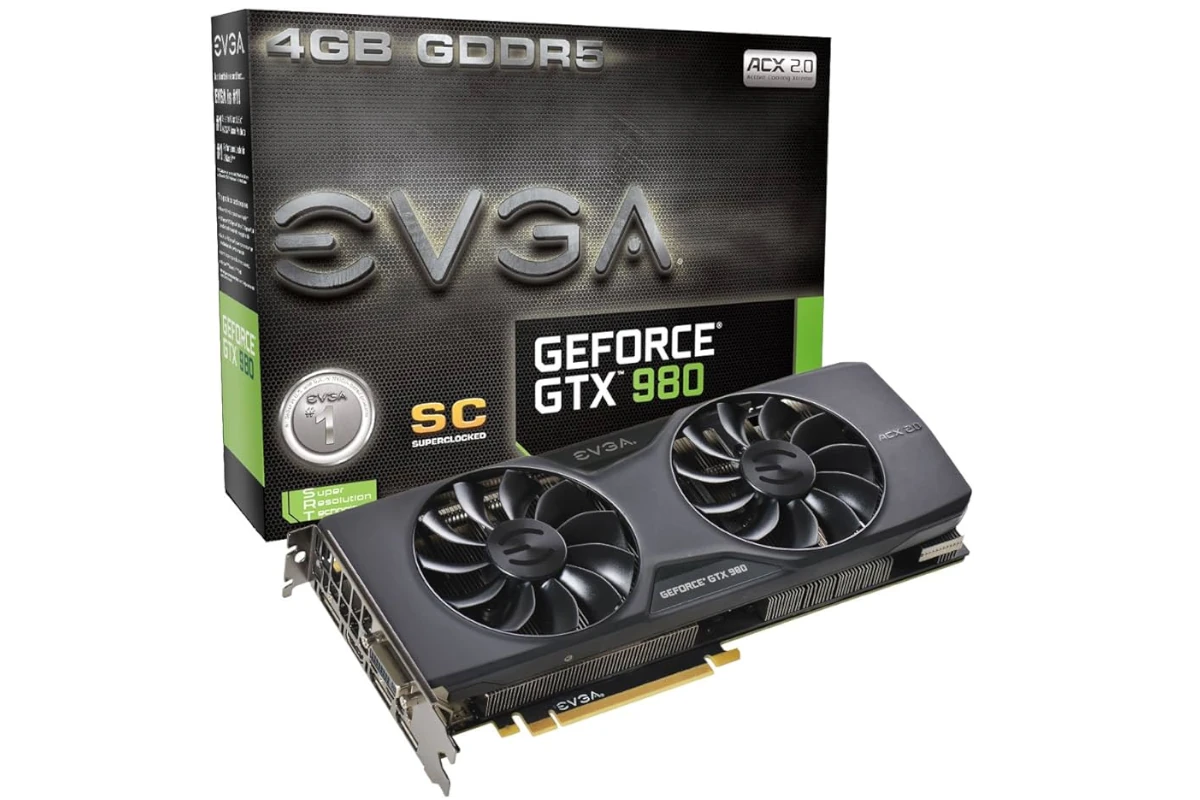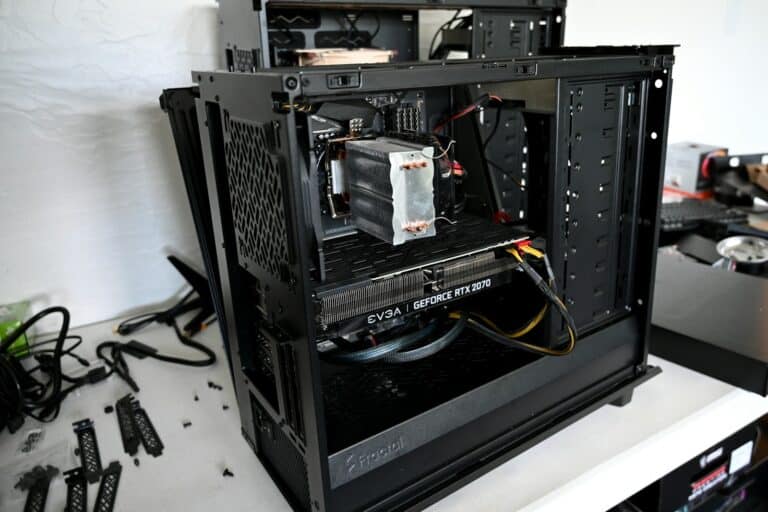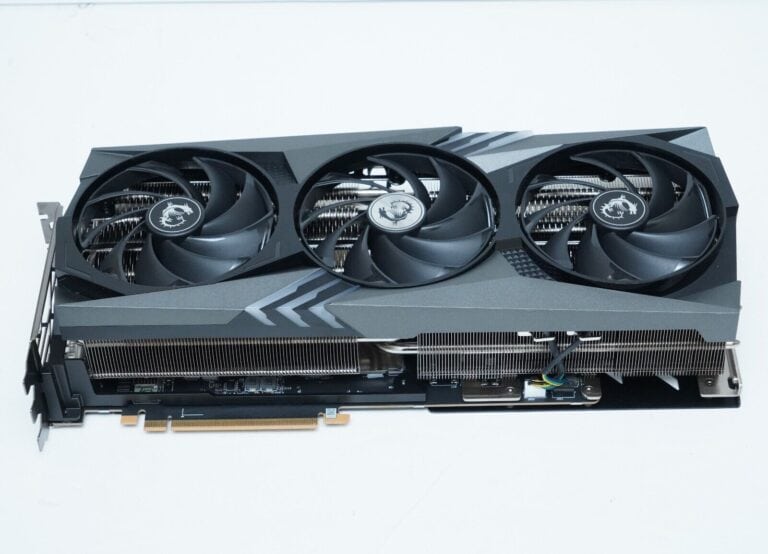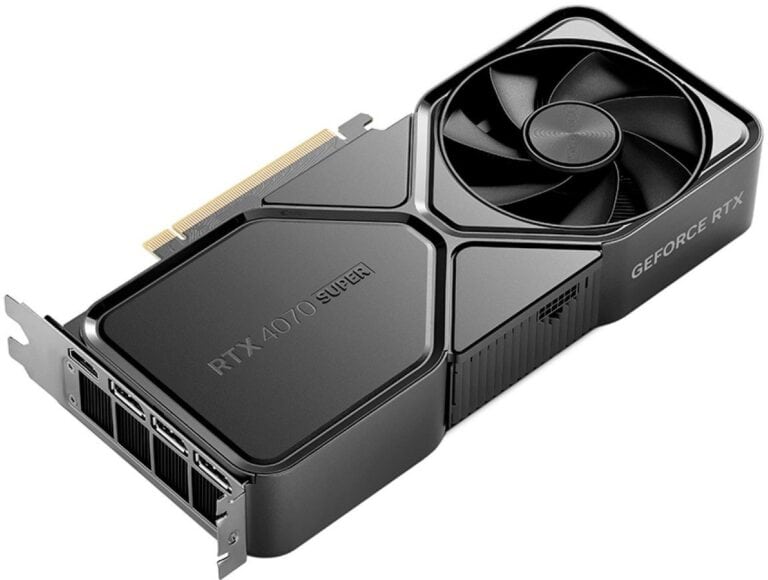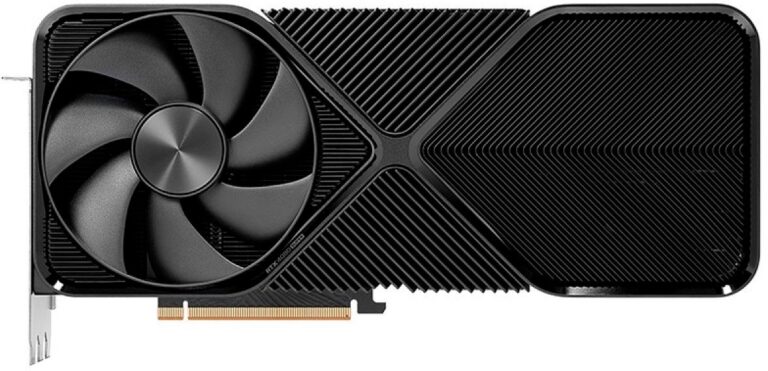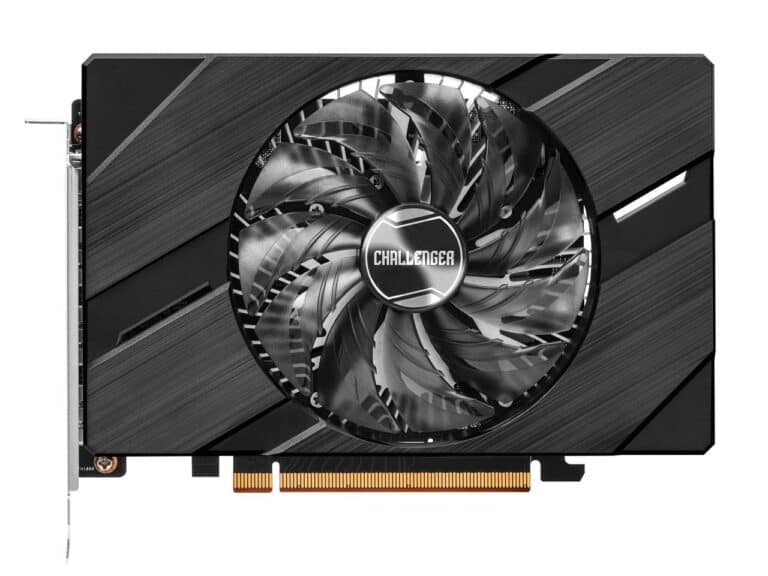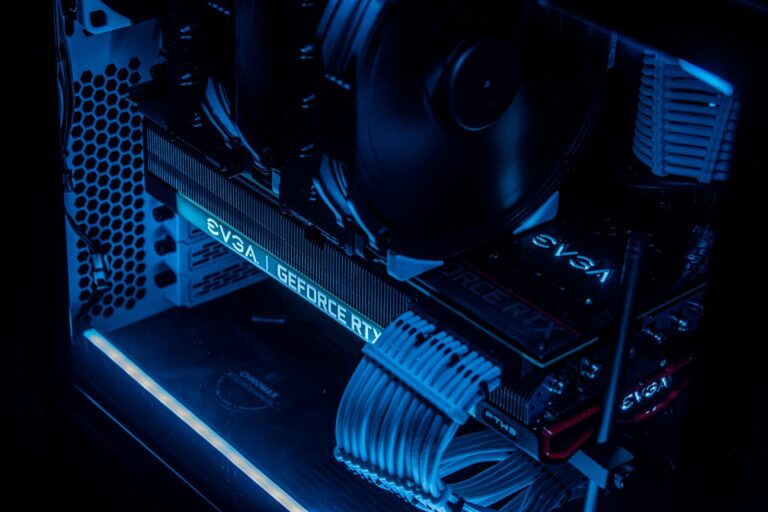The Nvidia GeForce GTX 980 is a powerful graphics processing unit (GPU) that had a big impact on gaming and graphic-heavy applications when it came out in 2014. It’s part of Nvidia’s well-known GeForce GTX 900 series. The GTX 980 has a strong architecture and advanced features that meet the needs of both gamers and professionals. It has many CUDA cores and a large memory interface, which helps it handle complex graphics tasks smoothly and efficiently.
Even years after its release, the GTX 980 still holds significant value in the market, showing how well-made Nvidia’s products are. Although newer models have come out, the GTX 980 gives us a look at the technology of its time and sets a standard for evaluating current GPU capabilities. Its introduction paved the way for the development of graphics cards, showing the progress from the GTX 980’s innovative design to the latest advancements in GPUs.
The NVIDIA GeForce GTX 980 was launched in September 2014 as the flagship of the Maxwell architecture. At the time, it was praised for its efficiency and strong 1080p/1440p gaming performance. Fast forward to 2025, however, the GTX 980 is now over a decade old and struggles to keep up with modern standards.
⚙️ Key Specs (GTX 980)
- Architecture: Maxwell (GM204)
- CUDA Cores: 2,048
- Base Clock: 1,126 MHz (Boost up to ~1,216 MHz)
- VRAM: 4GB GDDR5 (256-bit bus)
- Memory Bandwidth: 224 GB/s
- TDP: 165W
- Launch Price (2014): $549
🎮 Performance Benchmarks (2025)
1080p Gaming
- Still playable for older and less demanding titles.
- In esports games like CS2, League of Legends, and Valorant, it can deliver 60–100 FPS at medium settings.
- In modern AAA games (2023–2025 releases), performance is often below 30–40 FPS at high settings, requiring low/medium settings for playability.
1440p Gaming
- Struggles heavily.
- Most modern games fall below 30 FPS, even at low settings.
- Only viable for older titles (2014–2018 era).
4K Gaming
- Essentially unusable in modern titles.
- Even older games require medium/low settings for 30 FPS.
⚖️ Pros & Cons (2025)
✅ Pros
- Still runs older and esports titles decently at 1080p.
- Low power consumption compared to modern GPUs.
- Can be found very cheap on the used market.
❌ Cons
- Only 4GB VRAM — a major bottleneck for modern games.
- No support for modern features like ray tracing or DLSS.
- Severely outdated performance compared to even entry-level 2025 GPUs.
- Driver support is limited, with no optimizations for new games.
💰 Value in 2025
- Used price: ~$40–$60 on resale markets.
- For budget builds or retro gaming, it can still serve a purpose.
- However, even low-end modern GPUs (like RTX 3050 or RX 6600) vastly outperform the GTX 980 while offering modern features and more VRAM.
🏆 Verdict: Is the GTX 980 Worth It in 2025?
The GTX 980 is no longer a viable gaming GPU for modern AAA titles. It’s fine for light esports, indie, and retro gaming, but if you want to play current games smoothly, you’ll need at least an RTX 3060 or RX 6600 class card.
👉 Bottom line: Only worth buying if you find it dirt cheap and need a basic 1080p card for older games. Otherwise, skip it.
A Look Back at the Nvidia GeForce GTX 980: Specs, Performance, and Legacy
The Nvidia GeForce GTX 980, launched in September 2014, marked a significant leap in graphics processing technology. It was the first consumer graphics card to utilize Nvidia’s Maxwell architecture, promising improved performance and power efficiency compared to its predecessors.
Technical Specifications
The GTX 980 came with an array of features designed to enhance gaming and computational performance:
| Specification | Value |
|---|---|
| GPU Architecture | Maxwell |
| CUDA Cores | 2048 |
| Base Clock | 1126 MHz |
| Boost Clock | 1216 MHz |
| Memory | 4GB GDDR5 |
| Memory Interface | 256-bit |
| Memory Bandwidth | 224 GB/s |
| Thermal Design Power | 165W |
Performance Benchmarks
The GTX 980’s real-world performance impressed gamers and tech enthusiasts alike. It could handle most games at 1080p resolution with high settings and even push some titles to 4K. Its power efficiency was also notable, consuming less power than previous-generation high-end cards.
Legacy and Impact
The GTX 980’s influence extended beyond its initial release. It paved the way for future Maxwell-based graphics cards and set a new standard for performance and power efficiency in the GPU market. Even years after its launch, it remained a capable card for many gamers.
Continued Relevance
While newer graphics cards have surpassed the GTX 980 in raw performance, it still holds a place in the hearts of many PC builders. Its legacy as a technological pioneer and its lasting performance make it a sought-after item for collectors and budget-conscious gamers alike.
The Future of Graphics
The GTX 980 represents a pivotal moment in the evolution of graphics processing. It showcases how advancements in GPU technology can continually push the boundaries of what’s possible in gaming and other demanding applications.
Key Takeaways
- The GeForce GTX 980 is a powerful GPU from Nvidia’s GTX 900 series, launched in 2014.
- It features a large number of CUDA cores and an expansive memory interface for high-performance graphics processing.
- Despite newer models, the GTX 980’s influence is seen in the continuous advancement of GPU technology.
Technical Specifications
When examining the NVIDIA GeForce GTX 980, it’s essential to focus on its technical aspects, which contribute to its performance and compatibility. This section breaks down its architecture, memory, performance, and compatibility features in detail.
Architecture and GPU Core
The GeForce GTX 980 is powered by the Maxwell architecture, specifically the GM204 GPU core variant. The Maxwell design streamlines the shading and power efficiency compared to its predecessors. With 2048 CUDA cores and a 28 nm process size, it balances performance and energy use. The die size for the GM204 chip is 398 mm², housing 5.2 billion transistors. This graphics card includes features such as DirectX 12 (12_1) support, OpenGL 4.6, OpenCL 3.0, and Vulkan 1.3, supporting modern gaming and application requirements.
Memory and Bandwidth
The GTX 980 is equipped with 4 GB of GDDR5 memory, having a 256-bit memory bus width. This setup results in a memory bandwidth of 224 GB/s, which accommodates fast data transfer between the GPU and the memory. The memory clock stands at 1753 MHz, enhancing the overall efficiency and speed in graphic processing tasks.
Performance and Power
Performance-wise, the GTX 980 boasts a solid balance between high-quality visuals and power consumption. The total graphics power (TDP) is rated at 165W, demanding less energy for its operational capacity. It requires two power connectors, typically one 6-pin and one 8-pin. The theoretical performance for single-precision (FP32) floats around 4612 GFLOPS, while double-precision (FP64) computations are at 144 GFLOPS. The pixel rate is noted at 72 GPixels/s, and the texture rate at 144 GTexel/s, which are indicators of the card’s capability in rendering detailed images.
Compatibility and Support
The GTX 980 showcases substantial compatibility support, featuring various output options such as DVI, HDMI, and DisplayPort. In terms of API support, the graphics card is compatible with Shader Model 6.7, CUDA 5.2, and above-mentioned graphics APIs. This ensures the card is suitable for a wide range of systems and can handle the latest games and applications. The broad support for different display standards and APIs extends the card’s utility in various computing environments.
Market Context and Comparisons
The GeForce GTX 980 emerged as a powerful player in the high-end GPU market, establishing new performance benchmarks and offering a significant improvement over previous generations. Let’s look at how it was positioned in terms of pricing, technology, and competition at the time of its popularity.
Pricing and Positioning
Initially, the GTX 980 commanded a premium price due to its cutting-edge technology, but as competition such as the GTX 970 and newer models like the GTX 980 Ti came to market, it occupied a mid-to-high tier in pricing. While the GTX 970 was slightly less powerful, it offered a more attractive price-to-performance ratio, making it a popular choice for budget-conscious gamers.
Competitors Pricing Comparison:
- GTX 970: Lower price, marginally reduced performance
- GTX 980 Ti: Higher price, increased performance
- R9 290: Competitive pricing from AMD with comparable performance
Technological Advancements
The GTX 980 was one of the first cards to utilize the Maxwell 2.0 architecture, which improved upon the efficiency compared to its predecessor, the Kepler architecture. This leap introduced features such as Dynamic Super Resolution and Voxel Global Illumination, enhancing image quality and lighting in games. It also supported DirectX 12 API, a significant step forward in graphics rendering technology.
Connectivity and Form Factor
As for physical characteristics, the card typically required two slots due to its size and had a diverse array of output ports:
- Ports:
- 1 x DVI
- 1 x HDMI 2.0
- 3 x DisplayPort 1.2
The GTX 980 was accommodating for multi-monitor setups and VR technology, making it a highly versatile option.
Competitive Analysis
NVIDIA’s GTX 980 consistently outperformed its AMD counterpart, the Radeon R9 290, and remained competitive as newer AMD models such as the Radeon RX 7900 series emerged. AMD’s R9 290X and later models presented alternatives, but the GTX 980 maintained a strong position, offering superior energy efficiency and lower operating temperatures. Older NVIDIA models like the GTX 780 Ti and GTX 680 substantially lagged behind the GTX 980 in performance, cementing the GTX 980’s status as a highly potent GPU of its time.
Frequently Asked Questions
In this section, we cover some common queries about the NVIDIA GeForce GTX 980 graphics card to help you stay informed and up to date.
What are the specifications of the NVIDIA GeForce GTX 980?
The NVIDIA GeForce GTX 980 features Maxwell architecture, with 2,048 CUDA cores across 16 Streaming Multiprocessors. It is equipped with a base clock speed of 1126 MHz and a boost clock of 1216 MHz. Its performance is enhanced by the inclusion of 4GB GDDR5 memory and a 256-bit memory interface.
How do you update drivers for the NVIDIA GeForce GTX 980?
To update the drivers for your NVIDIA GeForce GTX 980, download the latest version from the NVIDIA website. After the download is complete, run the installer, which will guide you through the process. Keeping drivers updated ensures that your graphics card performs optimally.
What is the memory capacity of the NVIDIA GeForce GTX 980?
The NVIDIA GeForce GTX 980 comes with 4GB of GDDR5 memory. This memory capacity helps it handle demanding games and high-resolution video content.
Can the NVIDIA GeForce GTX 980 support HDMI?
Yes, the NVIDIA GeForce GTX 980 supports HDMI. It can transmit audio and video signals over a single cable, which is convenient for connecting to modern monitors and TVs.
What were the initial retail prices for the NVIDIA GeForce GTX 980?
The initial retail prices for the NVIDIA GeForce GTX 980 varied upon its release in 2014 but generally ranged around $549. Prices varied based on the region and the retailer.
What are the differences between the NVIDIA GTX 980 and the GTX 980 Ti?
The NVIDIA GTX 980 Ti generally offers improved performance over the standard GTX 980. The 980 Ti has more CUDA cores, additional memory at 6GB GDDR5, and higher memory bandwidth. This results in a noticeable performance boost in gaming and rendering tasks.

